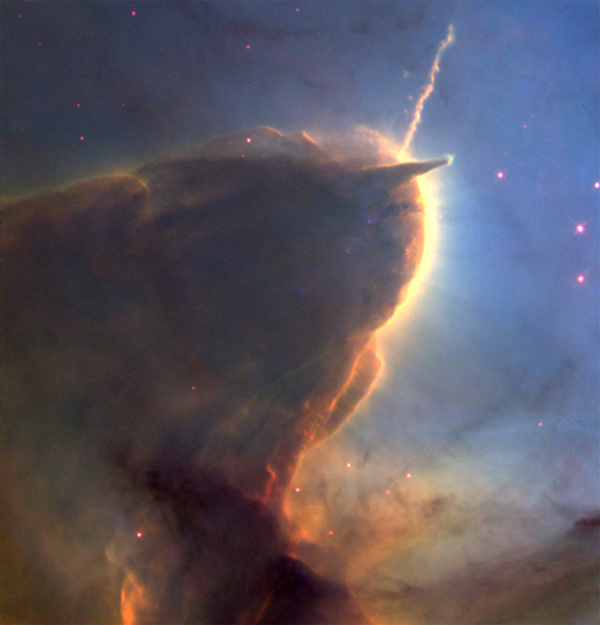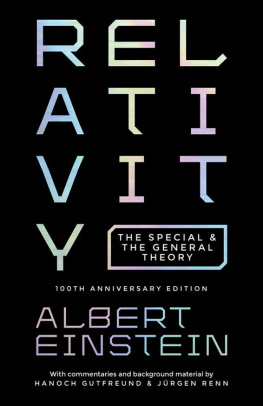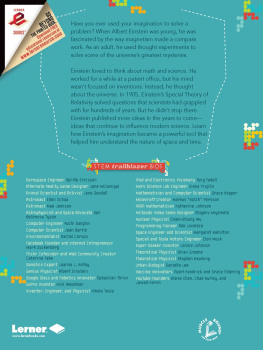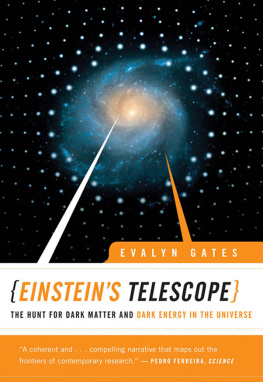
ACCLAIM FOR THE COSMIC VIEW OF ALBERT EINSTEIN
Periodically throughout human history individuals have appeared whose insight and imagination change our understanding in a way that can only be called revolutionary. Einstein revolutionized our scientific understanding of space and time with his use of thought experiments, which particularly intrigue me. These impressive images of the cosmos in which we participate are indeed a fitting accompaniment to this collection of quotations from his work.
His Holiness the 14th Dalai Lama Tenzin Gyatso
1989 Nobel Peace Laureate
The Cosmic View of Albert Einstein is one of the most inspiring books that I have ever seen. The photographs of the stellar constellations, the galaxies and the individual stars literally give me goose pimples. I myself cannot understand the concept of infinity, a notion that has plagued me all my life, and if contemplated too deeply would literally drive me out of human comprehension. The quotes of Albert Einstein interdigitated with the absolute wonders of the universe make the tome a precious and absolutely unique commodity. What a curious and wonderful man was he, full of the compassion of human kindness and sagacity. He is in a way a modern day prophet of the likes of Buddha, Jesus and Gandhi. He knew much but at the same time he recognized that he really knew and understood little about the cosmic puzzle as he stood in wonder before it.
Helen Caldicott M.D.
author, co-founder Physicians for Social Responsibility, named by the Smithsonian Institute as one of the most influential women of the 20th century
The thoughts and experiences of Albert Einstein on religion, existence and morality, as revealed in this magnificent volume, are those of a deeply insightful, moral and intelligent man of the cosmos. It is a vital read for all who wrestle with the greatest questions and dilemmas of our troubled civilization.
Edgar Mitchell, D.Sc.
Apollo 14 astronaut, 6th man on the Moon, founder Noetic Institute, author
THE
COSMIC
VIEW
OF
ALBERT
EINSTEIN
edited by WALT MARTIN and MAGDA OTT


STERLING ETHOS and the distinctive Sterling logo are registered trademarks of Sterling Publishing Co., Inc.
Compilation 2013 by Walter Martin and Magda Ott Credits for text in "Notes" and photos in "Image Credits."
All rights reserved. No part of this publication may be reproduced, stored in a retrieval system, or transmitted in any form or by any means (including electronic, mechanical, photocopying, recording, or otherwise) without prior written permission from the publisher.
ISBN 978-1-4549-0777-0
Design and production: Susan Welt for gonzalez defino, ny / gonzalezdefino.com
For information about custom editions, special sales, and premium and corporate purchases, please contact Sterling Special Sales at 8008055489 or specialsales@sterlingpublishing.com.
2 4 6 8 10 9 7 5 3 1
www.sterlingpublishing.com
In memory of Dr. James Van Allen,
who never lost a holy curiosity
Contents

THE TRIFID NEBULA Resembling a whimsical character out of Alice in Wonderland, this Hubble Space Telescope image actually reveals a stellar nursery being torn apart by radiation from a nearby, massive star. Located about 9,000 light-years from Earth, the Trifid resides in the constellation Sagittarius.
T his is a beautiful book. But it is far more than that. It presents a wealth of splendid images of the wonders of nature, in their infinite complexity and enormous dimensions. These images challenge the reader to share in the fruits of modern astronomy and to grapple with their humanistic significance. The editors perceptive quotations from the writings of Albert Einstein respond to that challenge. Einsteins thoughts guide the reader to a profound appreciation of our universe and to belief in a Divine and Omniscient Power.

James A. Van Allen
discoverer of the radiation belt around
the Earth (called the Van Allen belt)
that creates the polar auroras

Einsteins Cosmic View
A fter Einsteins death in 1955, cartoonist Herblock, in the April 19 issue of the Washington Post, published one of his most famous cartoons. In it, he depicted our little planet floating among other spherical objects in outer space, with a large square note tacked onto Earth: Albert Einstein Lived Here. While simple, this intriguing cartoon communicated the complex nature of the centurys most famous physicist: his importance to the world as a human being, his contributions to understanding fundamental truths about our universe, and his view of himself as a citizen of the whole world, not only one nation.
In an appropriate juxtaposition of wisdom, intellect, technology, and art, the editors compilation of Einsteins most memorable words and photographs by NASA, other observatories around the world, and amateur astronomers vividly captures the beauties of our expanding and dynamic Universe. The eternal mystery of the world is its comprehensibility. The fact that it is comprehensible is a miracle, Einstein mused in 1936. These photos and the work of the scientists and technical experts behind themartists allare proof of humankinds desire to comprehend the miraculously changing canvas we call our cosmos.
Albert Einstein, the supernova among physicists, is best known for his so-called genius, pacifism, and, in his later years, humanitarian and political activism. Though his achievements are manifold, enough to make the most accomplished among us blush, he was in fact a modest and humble human being, making his way through life like the rest of us, often bumbling and making mistakes along the way. He was, however, wise enough to change his mind as circumstances and the passage of time dictated, both in his physics and in his worldview.
As a prelude to the photographs that follow, it seems appropriate to expound briefly on Einsteins humanitarian proclivities. His convictions and beliefs might best be summarized in his cosmic view about religion, pacifism, the social responsibility of scientists, and in his passionate desire for a politically neutral world government established to protect the planet and us all from the baser in-stincts of humankind.
Einsteins Cosmic Religion
The dominant effect of the photos in this book is to inspire wonder and awe, words Einstein used in his attempt to define his faith in the power and laws of Nature. This he called his cosmic religion. The subject of Einsteins religion is a thorny one, and we can only judge his spiritual feelings by reading about them in the words he left behind, many of which accompany the photographs in this book. As someone who is fairly familiar with Einsteins writings and personality, I venture to say that by his profession of a cosmic religion, Einstein most likely meant to convey that it is possible to be religiousthat is, not an atheistwithout belief in the personal God that most societies throughout the world see as the real God.
Next page























